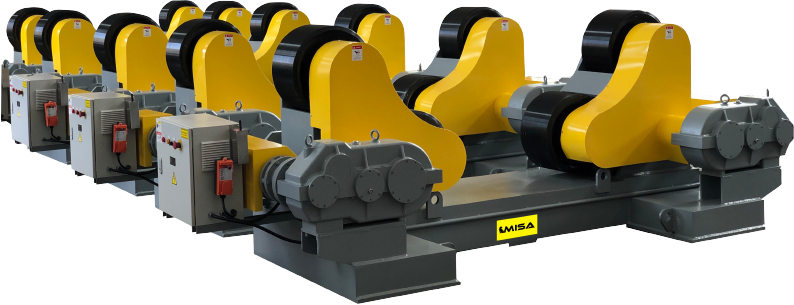


.png)
.png)
.png)

The welding manipulator is a kind of mechanical equipment that can move the welding head to the required position for welding, so as to facilitate manual welding, semi-automatic or automatic welding, ensuring the stability of the welding process.
Common welding manipulators include platform type, elbow arm type, gantry type, etc. These are often used with the welding rotator to complete the welding of circular container circular seams and longitudinal seams. In producing large industrial equipment, manipulators are extensively used, particularly in Tank and Vessel construction.
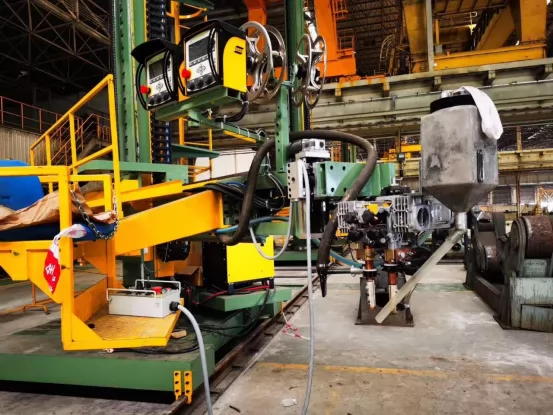
Welding automation encompasses both partial and full automation systems to improve the consistency, speed, and safety of welding processes. Automated systems can be programmed for specific weld paths, enhancing repeatability and precision. Technologies like robotic arms, CNC controllers, and automated fixtures are integral to this process.
In large-scale tank and vessel production, automated systems such as robotic welding arms and seam tracking sensors minimize human intervention, enhancing productivity and ensuring uniform weld quality. This is especially beneficial in industries with stringent quality requirements, like petrochemicals, steel structures, and shipbuilding.
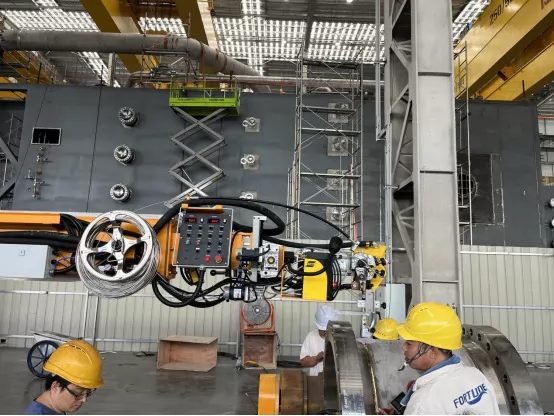
Welding integration is a process that links welding systems with manufacturing processes, involving the connection of welding machines to CAD and CAM systems for precise design and execution. This integration allows for seamless transitions between design, production, and quality control phases.
Modern welding integration also incorporates IoT technologies, creating connected environments where machines share real-time performance data. Such systems can adjust parameters mid-process, maintaining consistent quality across complex or large-scale welds. Collaborative robots (cobots) also play a role, allowing for efficient semi-automated processes alongside human operators where flexibility is required.
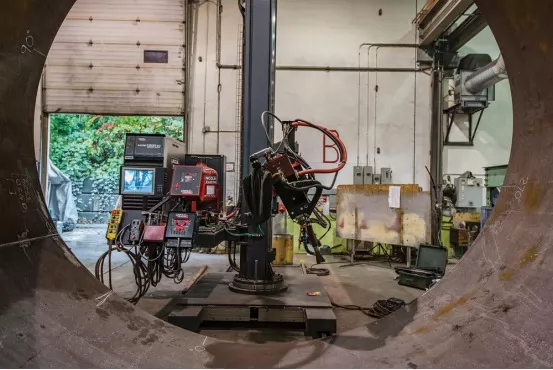
The welding manipulator is generally composed of columns, booms, slewing mechanisms, trolleys, and other modular components. Columns and booms are essential, built with bending and welding structural parts for rigidity. Various guide rails, such as triangular and flat square types, ensure high precision and wear resistance.
Due to its versatility in handling different metal welds, the welding manipulator is widely utilized across wind power equipment, pressure vessels, petrochemicals, pipelines, steel structures, boilers, shipbuilding, and repair industries. Customizable options, such as electric carriages, telescopic arms, maintenance ladders, tracking and monitoring systems, arc swing devices, and flux recovery systems, make it adaptable to different welding needs.
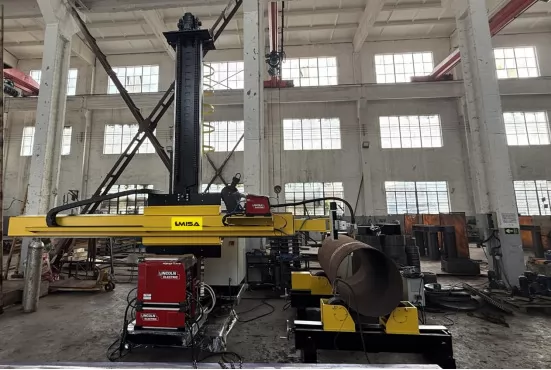
In industrial applications, tanks are sealed containers storing liquid or gas, and they are foundational for industries like petroleum, chemicals, food, and firefighting. Metal oil tanks are built from various steels (stainless, carbon, low-alloy) and come in types like vertical cylindrical and horizontal.
Vessels for gas storage support urban gas supply projects and various industries. They vary in pressure capacity, materials, and components, such as cylinders, heads, flanges, and safety devices. These vessels maintain system pressure and safely store gas or liquid.
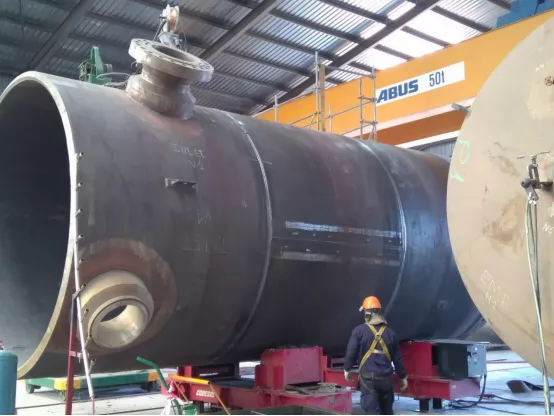
The container manufacturing process includes raw material inspection, marking, cutting, rust removal, machining, welding, non-destructive testing, and more. The specific welding process depends on factors like material, weldment type, and structural requirements, ensuring the highest quality through tailored welding parameters and methods.


